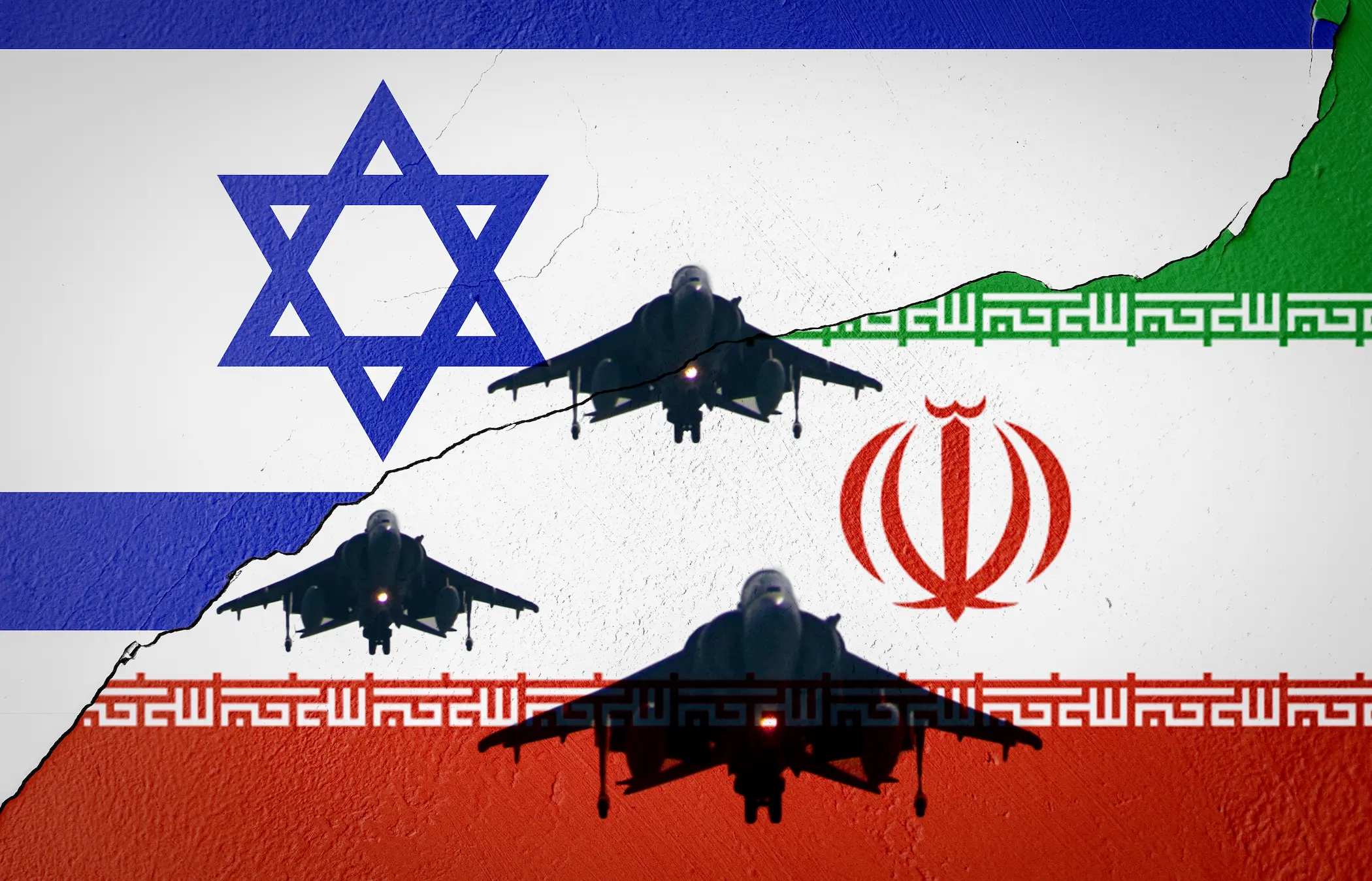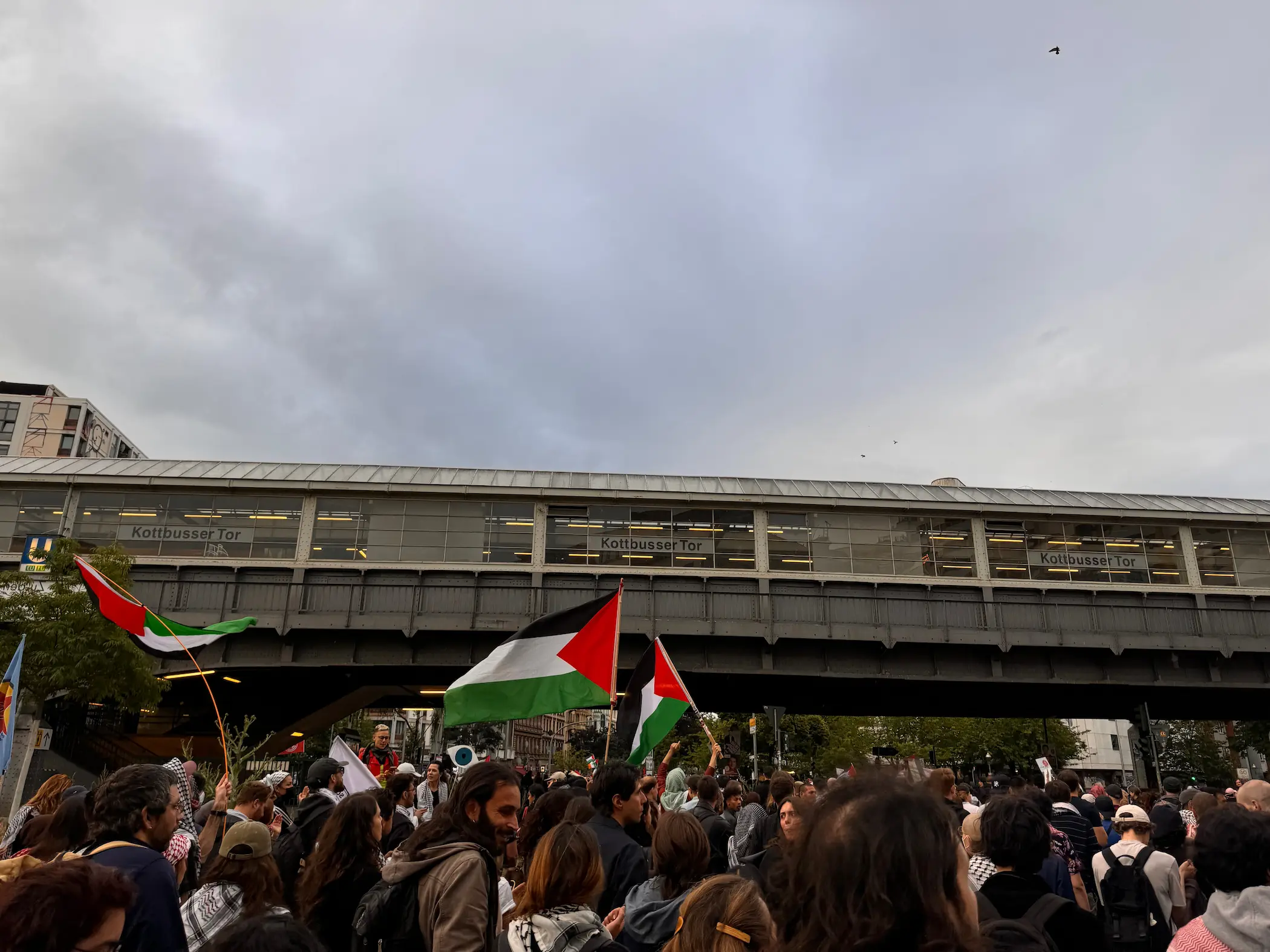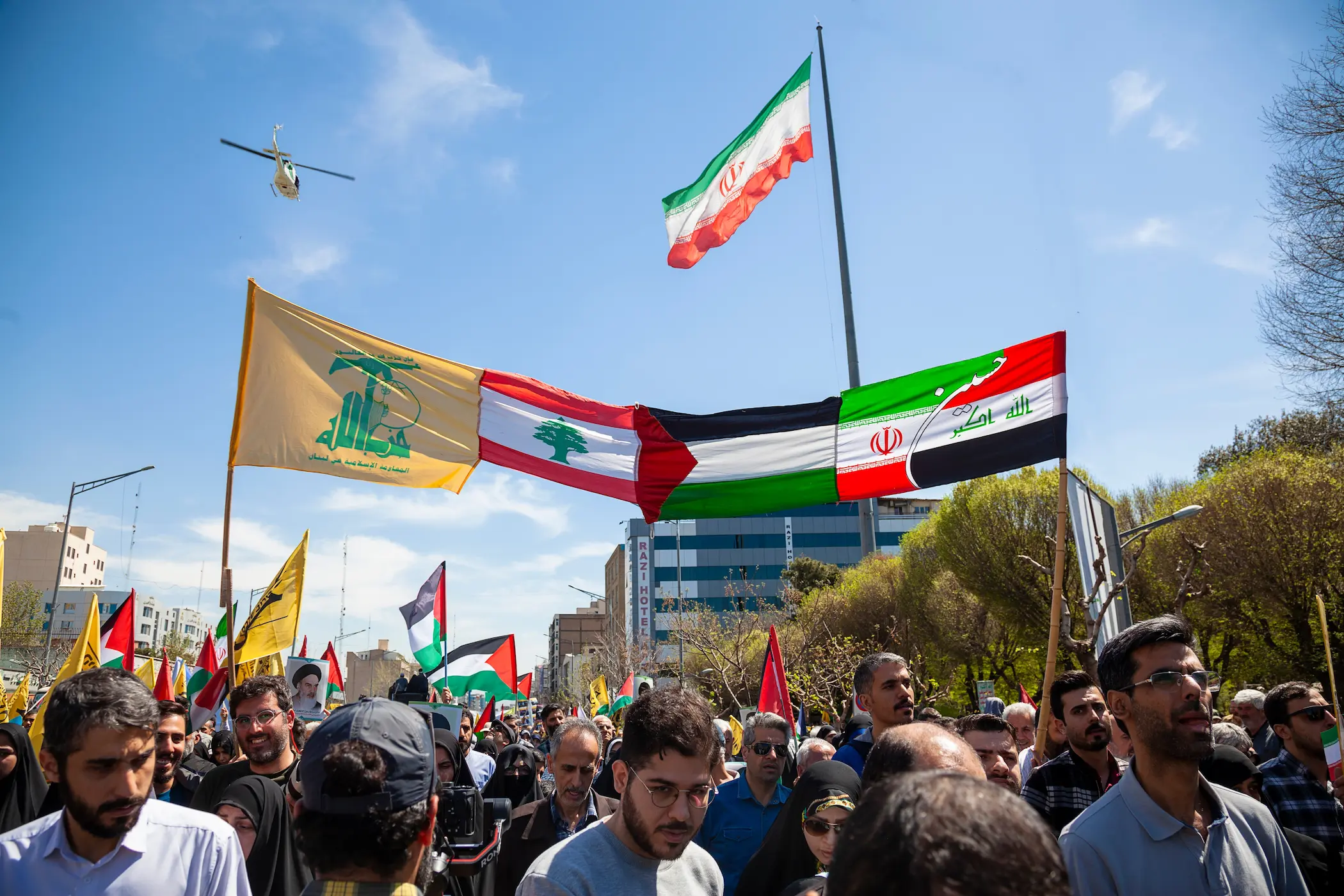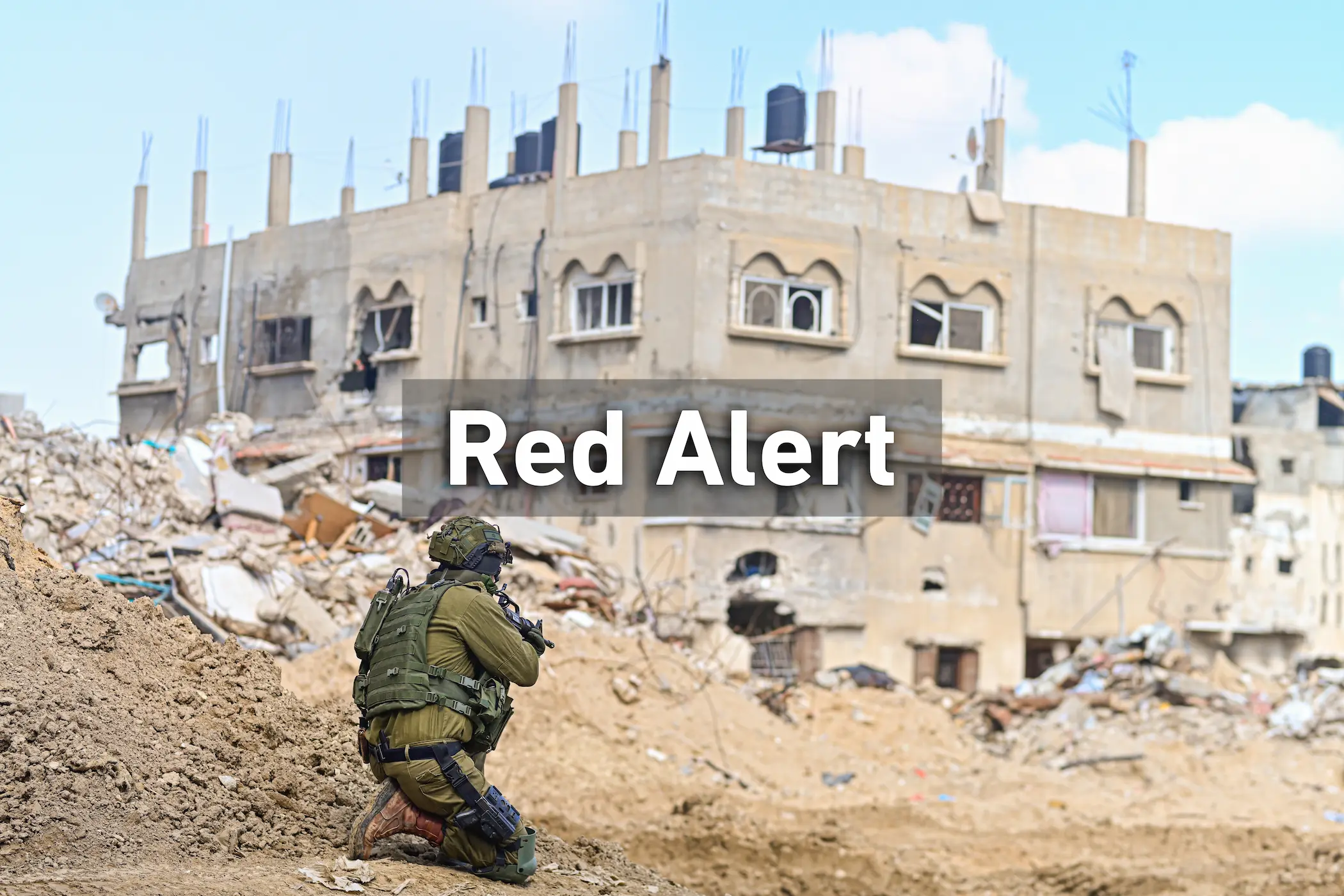Between June 13 and 14, 2025, Israel executed one of the most daring and sophisticated military operations in its contemporary history: a multi-pronged aerial strike that penetrated deep into Iranian sovereign territory in an unprecedented fashion. The offensive targeted critical nuclear infrastructure, including the Natanz and Fordow enrichment facilities, alongside additional military installations near Isfahan. Furthermore, the operation struck key airbases integral to Iran’s air defence network, most notably Hamadan and Tabriz airfields. In parallel, Israeli forces targeted senior leadership within both the Islamic Revolutionary Guard Corps (IRGC) and the conventional military, with subsequent intelligence assessments confirming direct hits and casualties among Iran’s high command.
Iran's response, though swift, bore the hallmarks of operational improvisation. Seeking to reassert deterrence and project resilience, Tehran launched over one hundred unmanned aerial vehicles (UAVs) on the same day, primarily of the Shahed-136 and Shahed-131 variants. These drones traversed approximately 2,000 kilometres through Iraqi and Syrian airspace. However, the majority failed to reach Israeli territory. Instead, they were intercepted by a multi-layered defensive network composed of Jordanian, Saudi, and Israeli air defence systems, all heavily supported by U.S. early-warning and tracking technologies. A large number were neutralized over Iraq’s Anbar province and the deserts of Jordan, while others were downed over northern Saudi Arabia.
On June 14, Iran escalated by launching its principal retaliatory strike in the form of a large-scale, coordinated ballistic missile attack. Over 150 ballistic missiles were deployed, prominently including Ghadr-110 (with a range of up to 3,000 km), Khorramshahr, and Sejjil-2—among the most advanced systems in Iran’s medium-range missile arsenal. These missiles targeted multiple sites deep inside Israeli territory. A notable strike occurred near Israel’s Ministry of Defence compound in the Kirya complex in central Tel Aviv, where one missile reportedly caused structural damage and minor injuries, though no fatalities among military personnel were confirmed. Additional missiles struck civilian infrastructure in Tel Aviv, Ramat Gan, and Rishon LeZion, injuring several individuals—one critically—with the majority suffering only mild to moderate wounds.
Despite the magnitude of the missile barrage, the strategic yield fell significantly short of Tehran’s expectations. This underperformance prompted Iranian authorities to broaden the scope of their confrontation, issuing explicit warnings that U.S. military assets across the region—particularly in the Gulf—would henceforth be considered legitimate targets. These threats referenced high-value installations such as Al Udeid Air Base in Qatar, Al Dhafra Air Base in the United Arab Emirates, and U.S. military positions in Iraq, including Ain al-Asad and Camp Victoria in Baghdad, as well as naval facilities in Bahrain.
From Iran’s strategic vantage point, any U.S. involvement—especially in reinforcing Israeli air defences—constitutes direct participation in the hostilities. This rationale is now used to justify Tehran’s threats to strike American military positions across the Gulf. The implications of this shift are profound: for the first time since 2020, the prospect of open military confrontation in the Persian Gulf has become a credible geopolitical scenario. The regional deterrence equation, long balanced on latent threat and calculated ambiguity, has now entered a phase of dangerous volatility.
This analysis seeks to offer a comprehensive examination of the strategic motivations underpinning Iran’s threats to target U.S. military bases in the Gulf region. By synthesizing operational data—namely, Iran’s patterns of ballistic missile and drone deployment—with broader structural dynamics of regional and international power distribution, to elucidate the strategic logic through which American military installations in the Gulf emerge as priority targets within Iran’s evolving deterrence doctrine.
The Operational Architecture of Iran’s Offensive in the June 2025 Strikes
Iran’s offensive toolkit emerged in June 2025 as a critical window into the doctrinal underpinnings of its deterrence posture and its broader approach to strategic power projection. Far from executing a symbolic or limited response to Israeli airstrikes, Tehran deployed a layered and integrated strike package combining medium-range ballistic missiles with loitering munitions—specifically, suicide drones. This operational blend aimed to saturate and overwhelm Israel’s multi-tiered air defence network while attempting to achieve a politically resonant penetration into its strategic depth.
The ballistic missiles used in the strikes were neither uniform in range nor capability. Instead, Iran relied on a heterogeneous mix of platforms, varying in guidance sophistication and warhead payloads. Among the most prominent was the Ghadr-110, a liquid-fuelled missile with an estimated range of 1,800–2,000 kilometres. It is equipped with inertial navigation systems (INS) and gyroscopic stabilization, yielding a circular error probable (CEP) of approximately 100–200 meters. These characteristics make it particularly suited for targeting fixed infrastructure—such as airbases or command centres—from deep within Iranian territory, without requiring forward deployment of launchers. The Ghadr-110 has been a mainstay of Iran’s strategic arsenal for over a decade and featured prominently in its June offensive.
In parallel, Iran deployed the more technically advanced Sejjil-2, a solid-fuelled missile with a similar range of approximately 2,000 kilometres, but with distinct operational advantages. Solid-fuel systems allow for faster launch readiness and reduced logistical visibility, enhancing survivability and rapid response capability. In its terminal phase, the Sejjil-2 reportedly reaches speeds approaching Mach 10, complicating interception by Israeli missile defence systems. Operational evidence suggests that this missile was likely used in the June 14 strike on Tel Aviv’s Kirya military-administrative complex—one of the most politically consequential targets hit during the confrontation.
Iran also employed the Khorramshahr missile, known for its heavy warhead payload, which can exceed 500 kilograms in newer variants. While its range also extends to around 2,000 kilometres, the Khorramshahr sacrifices accuracy for destructive capacity. With a larger CEP, this system is more effective when directed at urban centres or large-area targets, where precision is less critical. Its deployment in this context likely served a psychological and strategic signalling function rather than a strictly tactical objective.
On the UAV front, Iran utilized a deliberate tactical logic centred on drone saturation to degrade Israeli early-warning and interception capabilities before launching its main missile salvos. The centrepiece of this approach was the Shahed-136, a low-speed (~185 km/h), low-altitude, long-range suicide drone capable of traveling up to 2,000 kilometres. Its loitering flight profile and small radar signature allow it to evade detection until late in its approach trajectory. The smaller, cheaper Shahed-131 was also deployed in large numbers in the initial waves, serving as a distraction and forcing Israeli defences to expend interceptors and shift radar attention—thus paving the way for subsequent ballistic missile penetration.
Iran’s methodical sequencing followed a calibrated escalation geometry: the initial drone wave aimed to induce cognitive and kinetic saturation; the ensuing ballistic salvos were tiered into phases targeting command nodes, critical infrastructure, and finally decoy or cover targets. This structured pattern was evident in the operations of June 13 and 14. The first wave involved approximately 100 UAVs, followed by three successive missile salvos over the next 24 hours. Notably, this marked the first time Iran launched such a high-volume, full-spectrum strike directly from its own territory, rather than from proxy-held areas in Iraq or Syria as seen in previous confrontations.
Taken together, the diversity of weapons systems and the layered temporal design of the offensive illustrate Tehran’s ambition to redefine the deterrence balance by merging quantitative saturation with operational complexity. Yet, the overall effectiveness of this strategy remains contested. This leads naturally into the next phase of the analysis: Iran’s actual capacity to sustain this operational tempo in light of limitations in stockpiles, production capabilities, financial cost, and cumulative strategic exhaustion.
Offensive Sustainability in Iranian Strategy: Assessing Industrial Capacity, Stockpile Resilience, and Cost Dynamics
A critical prerequisite for assessing Iran’s ability to maintain complex offensive operations—such as those witnessed during the June 2025 strikes—is a rigorous examination of its production infrastructure, available stockpiles, and the real economic cost of deploying its missile and drone systems. Regardless of the technical proficiency of these platforms, their strategic utility is ultimately contingent upon Iran’s capacity to sustain high-intensity engagements, particularly against an adversary equipped with advanced defence architecture and supported by real-time intelligence sharing with global powers.
According to corroborated assessments from U.S. Strategic Command and independent defence research institutes, Iran possesses the largest ballistic missile stockpile in the Middle East, estimated at over 3,000 missiles. However, this aggregate figure must be disaggregated to distinguish between nominal inventory and operationally deployable systems. More conservative analyses indicate that only approximately 1,000 missiles are in a state of immediate readiness—preloaded on launchers, maintained near launch zones, and not requiring technical servicing prior to deployment. This distinction is not merely technical; it significantly reshapes the interpretation of Iran’s actual responsiveness under conditions of strategic pressure.
On the UAV front, Iran is reported to field approximately 3,894 military drones, spanning a wide spectrum of platforms. This includes loitering munitions such as the Shahed-136 and Shahed-131, as well as reconnaissance and combat drones like the Shahed-149 Gaza, Mohajer, Ababil, Arash, and Karrar. More recently, Iran has also introduced systems with vertical take-off and landing (VTOL) capabilities and drones incorporating semi-autonomous smart targeting. Nonetheless, the vast majority of operational combat capability remains concentrated in its kamikaze drones, which are relatively inexpensive, rapidly producible, and optimized for saturation tactics—unlike the more sophisticated systems intended for strategic reconnaissance or targeted assassinations.
Financially, the cost burden of Iran’s June 13 offensive was considerable. On that day alone, Tehran reportedly launched 150 ballistic missiles, with per-unit costs ranging between $3 million and $8 million, depending on the system. For example, the Shahab-3 is priced around $3 million, while the Ghadr-110 costs approximately $5 million, the Sejjil-2 $6 million, and the Khorramshahr up to $8 million. Assuming a conservative average of $3 million per missile, the total missile-related expenditure for that day would amount to $450 million.
With respect to drones, Iran is estimated to have deployed approximately 100 Shahed-136 units, which cost between $20,000 and $50,000 each to manufacture domestically. However, when exported—particularly to Russia—prices reportedly range between $193,000 and $375,000 per unit. Using an internal production estimate of $35,000 per drone, the total cost of drone deployment for the day was approximately $3.5 million, bringing the total cost of the first day’s offensive to around $453.5 million.
These figures reveal critical distinctions between tactical volume and strategic sustainability. For comparative context, in October 2024, Iran launched approximately 180 missiles in a high-intensity salvo that cost an estimated $2.3 billion, averaging $12 million per missile, due to the use of advanced platforms such as the Khorramshahr-4 and Amad. By contrast, the June 2025 strikes were more cost-efficient per unit but still represented an extraordinary fiscal outlay—particularly in light of Iran’s ongoing macroeconomic instability and sanctions regime.
Beyond financial metrics, the more pressing constraint lies in replenishment. Iran’s estimated monthly production capacity ranges between 50 and 100 ballistic missiles, meaning that the June 13 strike alone expended the equivalent of 1.5 to 2 months of missile production. For UAVs, Iran is believed to produce 200 to 300 units per month, roughly 7 to 10 drones per day, while expending 100 drones in a single day—effectively depleting 10 days’ worth of output within 24 hours.
Quantitative analysis of these figures suggests that if Iran were to sustain the same tempo—150 missiles and 100 drones per day—its ready-to-launch missile inventory would be exhausted within 6 to 7 days, while the full stockpile might last up to 20 days in theory, though this assumes flawless logistics and uninterrupted operational command—conditions unlikely in the face of continued Israeli pre-emptive strikes. For drones, the available inventory could theoretically support 39 days of operations without additional production, extending to 60–90 days under full-capacity manufacturing. Still, this does not alter the fact that drones have shown significantly lower battlefield impact compared to ballistic missiles, particularly after Israel upgraded its defence architecture in cooperation with U.S. and French partners in early 2025.
In sum, Iran’s current offensive posture—despite its initial intensity and operational discipline—is bounded by hard sustainability limits. The leadership in Tehran thus faces a strategic inflection point: either reduce its consumption rate or pivot toward alternative escalation instruments. Accordingly, the next section of this analysis will shift focus to evaluating the actual effectiveness of the June 2025 strikes and the extent to which they altered Israel’s deterrence calculus or degraded its military infrastructure in any meaningful way.
Operational Effectiveness of Iran’s Strikes: Evaluating Escalation Through Field Outcomes
Assessing the operational effectiveness of Iran’s strikes against Israel in June 2025 is pivotal to understanding the limitations of Iran’s offensive military power—not merely in quantitative terms, but in relation to its tangible impact on deterrence dynamics and the strategic balance of power. Despite the high volume of missiles and drones deployed, the material consequences on the ground were markedly limited when weighed against the scale of Iran’s resource expenditure.
The first and most visible indication of diminished effectiveness was the near-total failure of Iranian drones to penetrate Israeli airspace. While Tehran launched over 100 drones, the vast majority were intercepted well before reaching Israeli borders. This outcome was the result of a combination of technical and operational factors. The drones, primarily the Shahed-136, operate at low speeds (around 185 km/h) and low altitudes, making them vulnerable to early detection by integrated multinational radar systems. These included U.S., Israeli, Jordanian, and Saudi networks, which successfully tracked and intercepted drones over Iraq’s Anbar province, Jordan’s northern border, and northeastern Saudi Arabia. U.S. forces stationed in Syria and Iraq also played a significant role in surveillance and targeting. By the time several drones reached Israeli airspace, they were already degraded in navigational performance, making them easy targets for interception—resulting in a near-complete operational failure of the drone assault phase.
On the ballistic missile front, Iran launched approximately 150 missiles during the main wave on June 14. However, Israel’s multi-tiered missile defence system demonstrated exceptional efficiency. Three principal systems—Arrow-3, David’s Sling, and the Iron Dome—operated in an integrated fashion to intercept threats at varying altitudes and distances. These were further reinforced by American THAAD batteries and Aegis-class naval assets in the Eastern Mediterranean. According to multiple military and journalistic sources, the cumulative interception rate exceeded 90%, substantially neutralizing the offensive’s intended impact.
Moreover, the timing and structure of Iran’s attack lacked the element of strategic surprise. The widespread use of drones in the initial wave served as a de facto early warning system, enabling Israel to elevate its defence posture in advance. Israel’s pre-emptive strike on Iran’s Natanz nuclear facility prior to the Iranian retaliation had already heightened its alert level. This advantage in readiness—a decisive factor in asymmetric warfare—enabled Israel to blunt the effectiveness of the Iranian assault.
On the ground, the actual damage was minimal. Reports confirm that only one missile penetrated Israel’s defences and landed near the Kirya military complex in central Tel Aviv, the headquarters of the Israeli Ministry of Defence. The missile caused superficial structural damage around the Marganit Tower, along with minor injuries, but no loss of life or operational disruption. The remaining missiles that evaded interception struck civilian areas in Tel Aviv, Ramat Gan, and Rishon LeZion, resulting in fires and structural damage. Casualty reports ranged from 1 to 2 civilian fatalities, with over 40 injuries, most attributed to psychological distress or minor trauma.
Iran claimed to have targeted military airbases and installations; however, open-source satellite imagery, OSINT investigations, and reporting by CBS, The New York Times, and the Institute for the Study of War found no evidence of damage to strategic military sites. All confirmed strikes appeared to be either civilian or symbolic in nature.
From a tactical perspective, Iran invested approximately $500 million in this single operation, expending a significant portion of its missile and drone stockpiles. While the strikes succeeded in triggering widespread civilian panic and disrupting daily life across Israeli cities, they failed to achieve any meaningful military or strategic objectives. No bases were disabled, no nuclear infrastructure was hit, and no command-and-control facilities were compromised. This stark mismatch between cost and result raises fundamental questions regarding the long-term utility of Iran’s current escalation model—especially in light of constrained stockpiles, high replenishment costs, and the rapid evolution of Israeli and allied missile defence capabilities.
Against this backdrop, the subsequent section of the analysis will turn to Iran’s potential strategic alternatives. These include the activation of regional proxy forces, or the expansion of its target set beyond Israeli territory—most notably toward U.S. military installations in the Gulf region, a shift that would redefine the scope and risk profile of the confrontation.
Assessing Iran’s Strategic Alternatives Under Escalation Pressure
Following the failure of Iran’s direct strike on Israel to produce any meaningful strategic outcomes—and amid the heavy financial and material costs it incurred—the Iranian leadership has been compelled to reassess its confrontation posture and reconsider the escalation ceiling. The June 2025 assault, despite its operational intensity, was effectively neutralized by Israeli and U.S. missile defence systems, with interception rates exceeding 90%. This transformed what was intended to be a show of deterrence into a test of Iran’s capacity to absorb the cost of escalation in a highly saturated security environment.
The first alternative available to Iran lies in reverting to a proxy warfare model. This would involve reactivating regional allied militias such as the Popular Mobilization Forces (PMF) in Iraq, the Houthis in Yemen, and Hezbollah in Lebanon and Syria. These actors retain the operational capability to conduct attacks on Israeli or U.S. assets without implicating Tehran directly, thereby preserving Iran’s ability to manoeuvre politically. However, this option faces significant constraints. The sustained attrition of these groups’ arsenals and leadership structures—due to repeated Israeli and American strikes since late 2023—has weakened their offensive viability. Moreover, domestic political and economic pressures within these groups’ host states further diminish their readiness for high-intensity engagement.
The second alternative involves a shift to a low-intensity, attritional strategy. Iran could reduce the frequency and scale of its direct attacks, deploying fewer missiles and drones over extended intervals. This would conserve strategic stockpiles and mitigate the risks of full-scale retaliation, while maintaining pressure on adversaries. Nonetheless, this approach suffers from limited impact. The low operational yield of Iran’s high-intensity barrages suggests that reducing the scale would only exacerbate perceptions of Iranian inferiority and reinforce Israel’s deterrence dominance. In effect, this alternative risks solidifying Iran’s image as a state unable to meaningfully shift the strategic calculus.
The third option—which appears to have already materialized—is the de facto exhaustion of Iran’s readily deployable arsenal. Based on available data, Iran launched 150 missiles in a single day from a stockpile of roughly 1,000 operationally ready systems, implying that maintaining such a tempo would have depleted reserves in under a week. The sharp drop in attack intensity following June 14 confirms this assessment. This scenario underscores not only the limited effectiveness of Iran’s escalation but also its medium-term vulnerability in terms of strategic readiness.
The fourth and most geopolitically sensitive alternative entails redirecting the confrontation away from Israel and toward more vulnerable and proximate U.S. military assets in Iraq and the Arabian Gulf. This approach is premised on the notion that U.S. involvement in the conflict has already shifted from political to operational. The deployment of American THAAD and Aegis systems in support of Israeli defence directly implicates Washington in Iran’s strategic calculus. Consequently, targeting U.S. bases is no longer framed as a tactical escalation, but rather as a response legitimized by both military necessity and political discourse within Iran.
What distinguishes this alternative is its operational efficiency. The geographical proximity between southern Iran and major U.S. bases in the Gulf—such as Al Udeid in Qatar and Al Dhafra in the UAE—is approximately 300 to 500 kilometres. This places them well within range of Iran’s short-range drones and loitering munitions, such as the Shahed-131 or the Mohajer-6. Unlike attacks on Israel—which require long-range platforms and expose drones to multilayered radar networks over extended flight paths—strikes on Gulf-based assets offer shorter response times and a higher likelihood of penetration.
Moreover, saturation attacks in this theatre are tactically more viable. A Shahed-131 launched from Iranian territory toward a Gulf target may reach its objective in under an hour, avoiding the radar coverage density faced en route to Israel. Iran’s regional proxies, particularly the PMF and the Houthis, have previously demonstrated their capacity to target U.S. positions using both short-range rockets and drones, adding operational redundancy to Tehran’s direct capabilities.
Additionally, several U.S. installations in Iraq are structurally exposed and only partially shielded by advanced missile defence systems. Iran’s January 2020 ballistic strike on Ain al-Asad Airbase—following the assassination of Qassem Soleimani—proved that such attacks can inflict localized damage without necessarily provoking total war. This precedent strengthens the appeal of this alternative: it enables Iran to inflict credible harm at reduced cost and without draining its strategic reserves.
Thus, Iran’s menu of alternatives distils into a stark equation. Direct confrontation with Israel has proven ineffective both financially and operationally. Proxy warfare and attritional strikes offer marginal utility. By contrast, targeting U.S. assets in the Gulf presents a dual benefit: it escalates the confrontation in a calibrated manner while imposing cumulative pressure on U.S. decision-making. This pathway offers Tehran a chance to reconfigure the rules of engagement and potentially recalibrate deterrence in its favour—even if only incrementally.
In sum, a layered and multidimensional analysis of Iran’s June 2025 strikes on Israel—and the subsequent strategic deliberations within Tehran—reveals that Iran faced a complex and consequential test of its deterrence logic and the practical limits of force projection within a heavily militarized regional environment marked by deep international entanglement. The Israeli aerial assault, in its timing, precision, and operational coherence, effectively redrew the contours of Iranian sovereign vulnerability. By contrast, the Iranian response—despite its numerical scale—fell significantly short of producing a strategic shift in the deterrence balance or in redefining the rules of engagement.
The failure to achieve tangible outcomes—whether in disrupting Israeli infrastructure or in influencing Israeli or American decision-making—exposed the fragility of the direct escalation model adopted by Iran. The confrontation laid bare the limitations of Iran’s drone-based strike doctrine in penetrating multilayered defence systems, and underscored Israel’s enhanced capacity, fortified by U.S. and European support, to absorb high-volume attacks without incurring strategic losses. Far from weakening Israeli deterrence, the Iranian attack inadvertently reinforced it, leaving Tehran to reconcile the widening gap between its coercive signalling and actual strategic effect.
Moreover, the analysis reveals that Iran’s capacity to sustain such operations is constrained by hard limits in terms of stockpiles, production capability, and financial burden. These structural pressures have prompted Iranian strategists to consider more adaptive alternatives: leveraging regional proxies or expanding the conflict domain toward U.S. military presence in the Gulf. While these options carry their own escalation risks, they reflect Iran’s attempt to recalibrate its deterrence framework in light of the inefficacy of its prior approach.
Accordingly, the post-June 2025 strategic landscape is not one of deterrence stability, but of transitional volatility—where all actors are re-evaluating cost thresholds, repositioning tactical assets, and widening the operational space that lies between overt warfare and uneasy peace. At the centre of this evolving equation stands Iran—constrained by the limits of its own power, and encircled by a dual-deterrence regime led by Israel and the United States. Any future confrontation will hinge less on raw military capability and more on Tehran’s ability to decode, manipulate, or reconstitute the architecture of mutual deterrence—and the precise thresholds that govern its collapse or recalibration.
References
Iran, Israel, IRGC, Nuclear: Israel’s Operation Rising Lion: A Look …, accessed June 13, 2025, https://www.ndtv.com/world-news/iran-israel-irgc-nuclear-israels-operation-rising-lion-a-look-inside-irans-key-nuclear-sites-8656023
Iran Update Special Edition: Israeli Strikes on Iran, June 12, 2025 …, accessed June 13, 2025, https://www.understandingwar.org/backgrounder/iran-update-special-edition-israeli-strikes-iran-june-12-2025
(VIDEO) Operation Rising Lion: Israel Bombs Tehran as Iran Begins …, accessed June 13, 2025, https://defencesecurityasia.com/en/operation-rising-lion-israel-bombs-tehran-as-iran-prepares-ballistic-missile-retaliation/
Israel-Iran strikes latest: Tehran begins retaliation with 100 drones …, accessed June 13, 2025, https://www.independent.co.uk/news/world/middle-east/israel-attacks-iran-hossein-salami-iraq-tehran-bombing-latest-news-b2769334.html
What we know about Israel’s attacks on Iran’s nuclear sites and …, accessed June 13, 2025, https://www.bbc.com/news/articles/cdj9vj8glg2o
Israel carries out strikes targeting Iranian nuclear, military sites …, accessed June 13, 2025, https://www.aljazeera.com/news/2025/6/13/sounds-of-explosions-heard-in-irans-capital-tehran
Israel strikes Iran: Operation Rising Lion launches preemptive …, accessed June 13, 2025, https://www.indiatoday.in/world/story/israel-launches-airstrike-in-iran-explosions-heard-in-tehran-report-glbs-2740035-2025-06-13
Iran launches drones at Israel as Israel attacks Iranian nuclear sites …, accessed June 13, 2025, https://www.cbsnews.com/news/iran-israel-drone-attack-retaliation-strikes-on-nuclear-sites-and-commanders/
Iran Vows ‘Painful’ Response After Israeli Attack | TIME, accessed June 13, 2025, https://time.com/7293795/israel-strikes-iran-attack-what-to-know/
Arab World Reacts to Israel’s Strikes on Iran – Newsweek, accessed June 13, 2025, https://www.newsweek.com/arab-world-reacts-israels-strikes-iran-2084948
Israel’s Security Challenges Amid the Iran-GCC Rivalry: Balancing Deterrence and Diplomacy, accessed June 13, 2025, https://moderndiplomacy.eu/2025/06/06/israels-security-challenges-amid-the-iran-gcc-rivalry-balancing-deterrence-and-diplomacy/
Israel’s F-16I Sufa hammers Iran with smart bombs, missiles, accessed June 13, 2025, https://bulgarianmilitary.com/2025/06/13/israels-f-16i-sufa-hammers-iran-with-smart-bombs-missiles/
Global oil prices soar after Israel attacks Iran – BBC, accessed June 13, 2025, https://www.bbc.com/news/articles/cn4qe4w1n2go
Israel-Iran Conflict Triggers Fear of ‘Death Spiral,’ Analysts Say | Today News – Mint, accessed June 13, 2025, https://www.livemint.com/news/world/israeliran-conflict-triggers-fear-of-death-spiral-analysts-say-11749789048503.html
US says it was not involved in Israel’s military strikes in Iran – BBC …, accessed June 13, 2025, https://www.bbc.co.uk/news/articles/cm2kd2k3mv7o
16. What to know about Iran’s nuclear sites | AP News, accessed June 13, 2025, https://apnews.com/article/iran-nuclear-sites-explained-israel-attack-4535b4ecb4aefb2f3de9e3ad62fe363f
Iran announces a new nuclear enrichment site after UN watchdog censure, accessed June 13, 2025, https://apnews.com/article/iran-nuclear-iaea-sanctions-728b811da537abe942682e13a82ff8bd
The Geopolitical and Strategic Implications of Iran’s Potential Withdrawal from the Nuclear Non-Proliferation Treaty Amid IAEA Tensions and Regional Military Dynamics in 2025 – https://debuglies.com, accessed June 13, 2025, https://debuglies.com/2025/06/12/the-geopolitical-and-strategic-implications-of-irans-potential-withdrawal-from-the-nuclear-non-proliferation-treaty-amid-iaea-tensions-and-regional-military-dynamics-in-2025/
Israel attacks Iran’s nuclear and missile sites, prompting Iranian drone-strike retaliation, accessed June 13, 2025, https://apnews.com/article/iran-explosions-israel-tehran-00234a06e5128a8aceb406b140297299
Israel strikes Iran despite Trump’s nuclear deal hopes – Axios, accessed June 13, 2025, https://www.axios.com/2025/06/13/israel-strike-iran-trump-nuclear-talks
Experts react: Israel just attacked Iran’s military and nuclear sites. What’s next?, accessed June 13, 2025, https://www.atlanticcouncil.org/blogs/new-atlanticist/experts-react-israel-just-attacked-irans-military-and-nuclear-sites-whats-next/
Israel Launches Operation Rising Lion To Destroy Iran’s Nuclear …, accessed June 13, 2025, https://www.twz.com/air/israel-strikes-iran
IDF: Iran launched over 100 drones at Israel, working to intercept them, accessed June 13, 2025, https://www.ynetnews.com/article/rjttyefqxl
The Latest: Israel attacks Iran, accessed June 13, 2025, https://apnews.com/article/israel-palestinians-iran-war-latest-06-13-2025-baa59e6be9612c12ff2dc2a480830279
2021 Natanz incident – Wikipedia, accessed June 13, 2025, https://en.wikipedia.org/wiki/2021_Natanz_incident
Iran explosion near Natanz nuclear facility a controlled test | Nuclear …, accessed June 13, 2025, https://www.aljazeera.com/news/2021/12/4/iran-explosion-near-natanz-nuclear-facility-a-controlled-test
Israel launches strikes on Iran’s nuclear sites and other targets; Iran launches retaliatory drone strike – CBS News, accessed June 13, 2025, https://www.cbsnews.com/news/israel-launches-strike-on-iran-sources-say/
Iranian TV shows black smoke rising from Iran’s Natanz nuclear enrichment facility but offers no damage assessment, https://wtop.com/world/2025/06/iranian-tv-shows-black-smoke-rising-from-irans-natanz-nuclear-enrichment-facility-but-offers-no-damage-assessment/
Has Israel’s attack on Iran failed? Fordow nuclear fuel enrichment plant untouched, accessed June 13, 2025, https://m.economictimes.com/news/international/us/has-israels-attack-on-iran-failed-fordow-nuclear-fuel-enrichment-plant-untouched/articleshow/121821051.cms
Israel’s Massive Attack Against Iran: Intelligence Brief – SpecialEurasia, accessed June 13, 2025, https://www.specialeurasia.com/2025/06/13/israels-attack-iran-june-2025/
IRAN REPORTS 5 CIVILIANS KILLED AS ISRAELI STRIKES …, accessed June 13, 2025, https://iranwire.com/en/news/142008-iran-reports-5-civilians-killed-as-israeli-strikes-continue/
Iranian state media confirms killing of Revolutionary Guards chief in …, accessed June 13, 2025, https://www.globaltimes.cn/page/202506/1336045.shtml
Samidoun condemns U.S.-Zionist aggression on Iran, urges solidarity, unity and action, accessed June 13, 2025, https://samidoun.net/2025/06/samidoun-condemns-u-s-zionist-aggression-on-iran-urges-solidarity-unity-and-action/
The Challenges Involved in Military Strikes Against Iran’s Nuclear Programme – RUSI, accessed June 13, 2025, https://my.rusi.org/resource/the-challenges-involved-in-military-strikes-against-irans-nuclear-programme.html
Iran Natanz nuclear site suffered major damage, official says – BBC, accessed June 13, 2025, https://www.bbc.com/news/world-middle-east-56734657
As Israel hits Iran, prayers, fortitude at home amid alarm, concern from abroad, accessed June 13, 2025, https://www.timesofisrael.com/as-israel-hits-iran-prayers-fortitude-at-home-amid-alarm-concern-from-abroad/
Rubio: Israel’s unilateral strike on Iran heightens Middle-East …, accessed June 13, 2025, https://telanganatoday.com/rubio-israels-unilateral-strike-on-iran-heightens-middle-east-tensions-us-remains-uninvolved
Saudi Arabia leads Arab condemnation of Israel attacks on Iran | The Business Standard, accessed June 13, 2025, https://www.tbsnews.net/worldbiz/middle-east/saudi-arabia-leads-arab-condemnation-israel-attacks-iran-1164286
New M-SAM-II bolsters UAE’s defense against Iran’s proxies – Bulgarian Military, accessed June 13, 2025, https://bulgarianmilitary.com/2025/05/13/new-m-sam-ii-bolsters-uaes-defense-against-irans-proxies/
New Dimensions of Strategic Depth | Hudson Institute, accessed June 13, 2025, https://www.hudson.org/information-technology/new-dimensions-strategic-depth-nadia-schadlow






















Comments